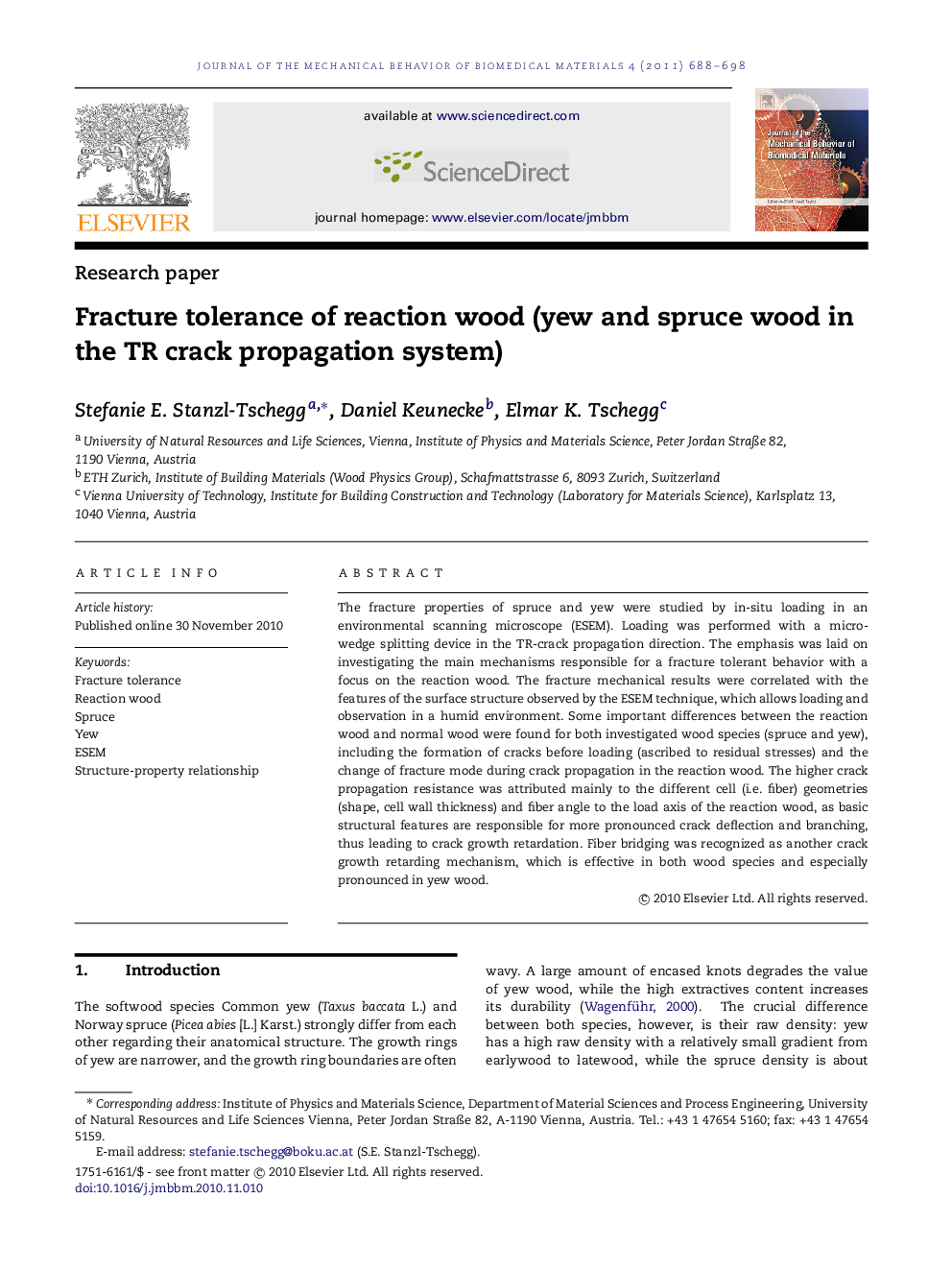| Article ID | Journal | Published Year | Pages | File Type |
|---|---|---|---|---|
| 811162 | Journal of the Mechanical Behavior of Biomedical Materials | 2011 | 11 Pages |
The fracture properties of spruce and yew were studied by in-situ loading in an environmental scanning microscope (ESEM). Loading was performed with a micro-wedge splitting device in the TR-crack propagation direction. The emphasis was laid on investigating the main mechanisms responsible for a fracture tolerant behavior with a focus on the reaction wood. The fracture mechanical results were correlated with the features of the surface structure observed by the ESEM technique, which allows loading and observation in a humid environment. Some important differences between the reaction wood and normal wood were found for both investigated wood species (spruce and yew), including the formation of cracks before loading (ascribed to residual stresses) and the change of fracture mode during crack propagation in the reaction wood. The higher crack propagation resistance was attributed mainly to the different cell (i.e. fiber) geometries (shape, cell wall thickness) and fiber angle to the load axis of the reaction wood, as basic structural features are responsible for more pronounced crack deflection and branching, thus leading to crack growth retardation. Fiber bridging was recognized as another crack growth retarding mechanism, which is effective in both wood species and especially pronounced in yew wood.
